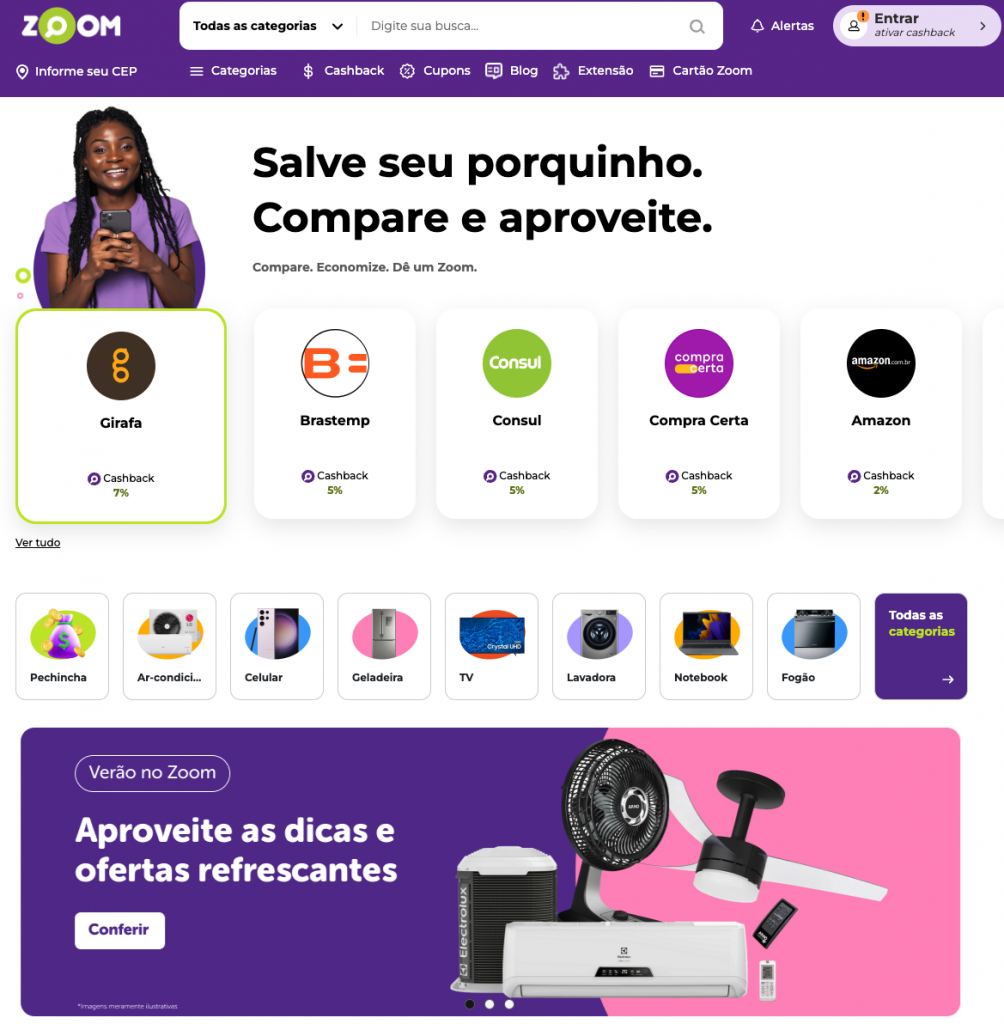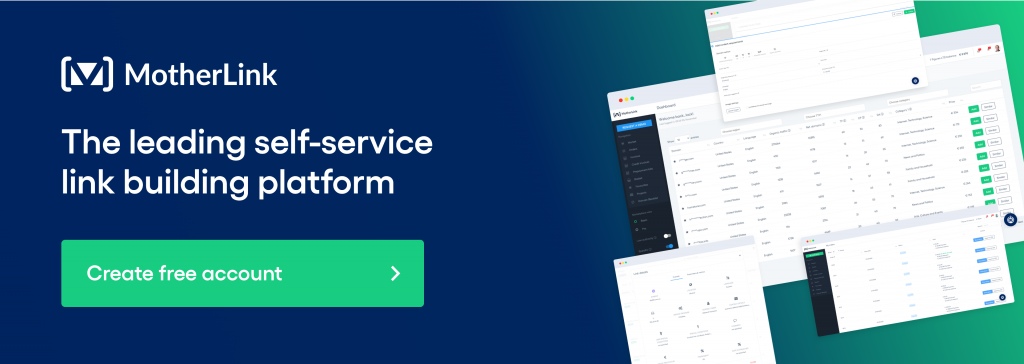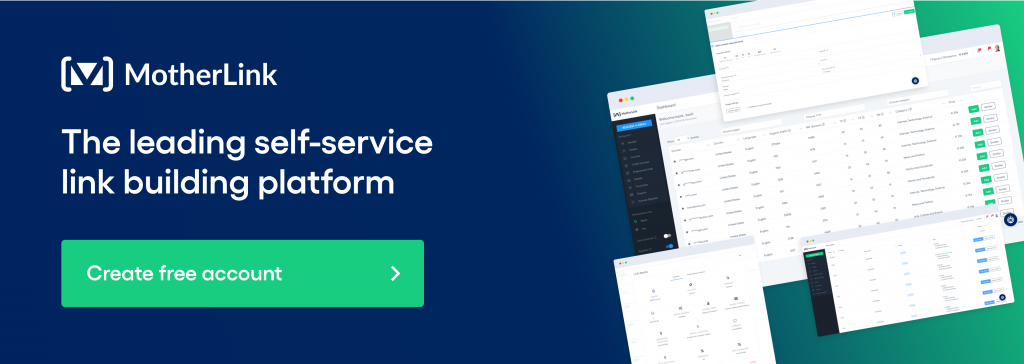Understanding the Impact of Google Ads and SEO on Your Business
November 29, 2023
In the dynamic world of digital marketing, professionals are constantly navigating a sea of choices. Every day, marketers face critical decisions that shape their brands’ online presence and performance. Whether it’s about achieving short-term sales boosts or building long-term brand equity, the choices are myriad and the stakes are high. In this article, we will compare the impacts of conversions generated by SEM (especially Google Ads) with the enduring, organic benefits of search engine optimization (SEO).
In addition to market statistics, we will cover the experience of one of the biggest e-commerce players in Brazil, Zoom.com.br, which from 2011 to 2020, reached 50 million visits per month and rose to the position of TOP 3 advertisers on Google with an annual spend of €9 million (taking the current value of the local currency).
“What made the difference in running the business was to keep the focus on results, which in my case meant checking some KPIs hour by hour to constantly optimize different efforts. In short, what I was looking for was to continually improve the traffic quality, always looking for more conversions. SEO and SEM played a fundamental role, and for many companies elsewhere, investing in SEO, in addition to being less costly, can be more efficient”, explains Thiago Flores, former CEO of Zoom.com.br, and currently a board member and advisor of e-commerce companies and tech startups.

Whether your goal is to climb the search rankings, generate leads, or convert clicks into customers, understanding the strengths and limitations of both approaches to search marketing is crucial.
As we journey through this article, we aim to unravel these complexities. Let’s begin by understanding the unique value propositions of Google Ads and SEO, and how they can be harnessed to achieve your marketing goals.
Key Benefits of Google Advertising for Marketers and SEO Professionals
With over 40,000 queries from search users every second, Google is the world’s most popular search engine, holding over 91% of the search market share globally. This usage allows Google to connect businesses with potential customers.
Global spending on search advertising was forecasted to reach $190.5 billion by the end of 2024, up from the anticipated spend of $164.6 billion in 2022.
But back in 2010, Google made $28.24 billion on Ads, when Zoom.com.br was a startup with a ten-person team making its first steps toward becoming the most relevant price comparison service in Brazil, facing Buscape in the same niche, which had millions of dollars in funds.
“In 2010 we wrote the first line of code for Zoom. Our budget was nothing compared to the competition, so we knew we had to differentiate ourselves. We could not just be a price comparator, but a partner throughout the consumer’s entire purchasing journey. And to be known, we rely on Google Ads and SEO”, recalls Thiago.
Google Ads, as a platform, offers an array of tools and features that can be a game-changer for anyone in digital marketing. For this comparison between this platform and SEO, we will highlight two factors that specifically cater to your needs as a marketer or SEO professional.
Precise Audience Targeting to Reach the Right People

One of the standout features of Google Ads is its ability to target audiences with incredible precision. Whether you’re promoting sports apparel or launching a new tech gadget, you can pinpoint your ideal customer. Imagine having the ability to display your ads to fitness enthusiasts on YouTube or tech buffs reading about the latest gadgets. This level of targeting ensures that your ads are not just seen but seen by the right people.
Aligning with User Intent to Capture Customers at the Right Moment
Google Ads shines in aligning with user intent. When someone searches for “running shoes” and your ad pops up, that’s not coincidence; it’s strategic placement. This alignment means your ads are more likely to be clicked by users who are actively seeking what you’re offering. It’s about connecting with potential customers when they’re most open to discovering your products.
When Zoom.com.br was definitively launched in 2011, Google Ads were still called Adwords and had a fraction of the features available today, but it was already decisive in matching offers with user’s search intent.
“The first two years were difficult. We were growing steadily, but our cash flow was still negative. At the end of 2013, Zoom was urged to become profitable after two years of heavy investments. SEO was already key for us, but in a meeting, we decided to risk and for the first time invest in Google Ads during Black Friday as a driver of retail sales in Brazil. And we couldn’t have done better, we closed the first month of 2014 in profit and since then the company has always been profitable”, details Thiago.
Much has changed since then. Google Ads is a much more robust and complex tool, and the price of the Black Friday keyword skyrocketed to the point of being almost prohibitive for many businesses.
But what remains almost intact is how to measure its results.
Measuring the Success of Google Ads Campaigns
Google Ads and Analytics offers deep insights into the measurements that matter for paid search campaigns such as the following key performance indicators (KPIs):
- Click-Through Rate (CTR): This metric indicates how often people who see your ad end up clicking on it. A high CTR suggests that your ad is relevant and appealing to your target audience.
- Conversion Rate: Ultimately, it’s not just about clicks, but actions. The conversion rate measures how many clicks on your ad result in a desired action, such as a purchase, sign-up, or download. It’s a direct indicator of your ad’s effectiveness in driving tangible results.
- Cost Per Conversion (CPC): This is critical for budget management. It helps you understand the cost-effectiveness of your campaigns in turning clicks into conversions. Lower CPC means you’re getting more value for your investment.
- Quality Score: Google’s Quality Score assesses the relevance and quality of your ads and keywords. A high-quality Score can lead to lower costs and better ad positioning, making it a key metric for optimization.
- Return on Ad Spend (ROAS): ROAS measures the return you’re getting from your ads in relation to the money spent. It helps gauge the overall effectiveness of your campaigns in financial terms.
By closely monitoring these KPIs in Google Ads and Analytics, you can make data-driven decisions to refine your Google Ads strategies, ensuring that your campaigns are not only reaching your target audience but also driving the desired actions in the most cost-effective manner.
The Downsides Of Google Ads
While the various Google Ads options offer a direct path for businesses looking to engage customers across their digital journey, there are also significant downsides to consider.
The most obvious? Google Ads require a continuous financial commitment. Some estimate that small to mid-sized businesses spend $9,000 or more per month on PPC campaigns.
When you pause a campaign, your ads cease to appear, causing an immediate loss in visibility and traffic. Unlike organic SEO, which can generate traffic without ongoing costs, Google Ads become a never-ending expense requiring regular budget allocation and management.
In specific industries, popular keywords come with a hefty price tag. The auction-based model means costs increase as more competitors bid for the exact keywords. Over time, you’ll pay more for the same visibility, leading to diminishing returns.
The pay-per-click model is also susceptible to click fraud, where your ads are clicked on maliciously, exhausting your budget quickly without generating genuine interest or sales.
Google Ads relies on past performance and click-through rates for optimization. However, historical data could be more accurate with the constant evolution of search behaviors, new platforms, and algorithm changes. An ad that performed well in the past may not resonate with the current audience.
“From 2013 to 2020, before the Zoom IPO, just to stay relevant and face the competition, we had to spend around €9 million euros per year. The need to invest on other fronts was quite evident”, says Thiago.
The former CEO of Zoom says that his team tested everything, including classic branding activations, out-of-home (OOH) advertising, guerrilla marketing, ads on open and closed TV channels, YouTube, remarketing, and even the sponsorship of a football club.
But combined with the Google Ads, it was the investments in SEO that “made the sales needle move”, according to Thiago.
Key Benefits Of SEO

SEO is more than a buzzword. It’s a critical strategy for anyone looking to gain online visibility. While many are familiar with on-page SEO factors like keywords and meta descriptions to improve Search Engine Positioning (SERP), off-page SEO plays an equally vital role.
The following are just a few benefits SEO brings to your business.
Lower Cost Per Acquisition
One of the main objectives of SEO is to acquire continuous traffic from search engines – 51% of shoppers use search engines like Google to research products before shopping.
High rankings in search results are pivotal for increased click-through rates. And unlike paid ads, you do not have to pay for any clicks your website receives from organic search results.
Builds Trust and Authority
Studies show that search users perceive pages with higher rankings as more credible. Practical off-page SEO activities like link-building from reputable sources further enhance this trust.
High-quality backlinks let search engines know your site is a credible resource, increasing both your rankings and customer trust. They also are considered by marketing experts to be one of the top three ranking factors.
Brand Exposure and Awareness
SEO is a cornerstone for increasing brand awareness. Your brand gains more visibility online as its rankings increase. Even without a click, each impression serves as a free advertisement, establishing brand recall. Furthermore, off-page SEO strategies like guest posting on industry blogs or social media mentions amplify this brand exposure.
High-Quality Leads
SEO targets users seeking information, products, or services like yours, making them high-intent visitors. Off-page SEO techniques like influencer partnerships can drive high-quality referral traffic that is more likely to convert.
Complements Other Marketing Efforts
SEO is most effective when integrated into a broader marketing strategy. Marketers can optimize social media, email marketing, and Google Ads for keywords to increase visibility online. For instance, a social media post that gains high engagement can earn natural backlinks, a crucial off-page SEO factor.

For Zoom.com.br, partnering with retail sites was key, as installing pixels where the purchase was made allowed the company to track conversions across third-party websites.
“Proving that the traffic we provided to the stores was more qualified was essential for us to increase our margin, charging more for our clicks”, explains Thiago.
Massive content production associated with efforts to optimize landing pages with more information about products, and the development of robots to keep price information always updated, were other efforts that, according to Thiago, impacted purchasing behavior, making users leave Zoom.com.br more determined to make a purchase at a retailer’s store.
“There was a large in-house team that worked with freelancers from all over the country to produce pages for a catalog that had 30 million products. There was so much content on so many pages that we reached the Google Ads ceiling with 1 million keywords. But it was this continuous optimization effort that resulted in €7.5 million in revenues in a year from organic traffic”, reveals Thiago.
Tracking SEO Success with KPIs for Organic Search Performance
For a comprehensive understanding of your SEO strategy’s effectiveness, it’s crucial to track specific KPIs that reflect the impact of your organic search efforts. These indicators provide invaluable insights into how well your SEO tactics are performing and where there’s room for improvement.
- Organic Traffic: This is the number of visitors coming to your site from organic search results. A steady increase in organic traffic is a strong indicator of effective SEO.
- Keyword Rankings: Track where your pages rank for your target keywords. Higher rankings are often correlated with increased visibility and traffic.
- CTR from Search Results: This measures how often people who see your site in search results end up clicking on it. A higher CTR suggests that your title tags and meta descriptions are compelling and relevant.
- Bounce Rate: The percentage of visitors who leave your site after viewing only one page. The ideal is a lower bounce rate indicating that search users found relevant content from their search query.
- Backlinks: The number and quality of backlinks to your website are crucial. They not only drive traffic but also boost your site’s authority and credibility. Link building services can charge $300 or more for relevant, authoritative links.
- Average Session Duration and Pages per Session: These metrics give you an idea of how engaging your content is. Longer session durations and more pages per session can indicate that visitors find your content valuable.
- Conversion Rate: Ultimately, the goal of SEO is not just to drive traffic, but to convert that traffic into tangible outcomes, whether it’s sales, sign-ups, or other actions.
Some analytics data for organic search can be found in Google Analytics and Search Console. KPIs like keyword rankings in search and backlink quality – are more difficult to track using Google’s native analytics tools.
Risks of an Improperly Executed SEO Strategy
While proper SEO can significantly enhance your website’s visibility, an improperly executed SEO strategy can severely backfire, causing your site to rank lower or even be de-listed from search results altogether.
Google has stringent spam policies to maintain the quality of search results for users. The search engine employs both automated systems and human reviews to detect violations. Breaching these policies may result in a “manual action,” causing your website to plummet in search rankings or disappear from results.
The following are ways websites can violate Google guidelines while trying to optimize for search.
Google considers cloaking one of the most harmful SEO techniques, as it involves showing different content to search engines to manipulate search rankings. Cloaking can mislead users, leading them to inappropriate or irrelevant content.
Creating doorway pages is another risky SEO strategy. These are essentially “fake” pages filled with keywords and serve no purpose but to trick search engines. These pages funnel users to a different page, impacting user experience adversely.
Overloading web pages with keywords, especially in a way that disrupts natural flow, is another problematic SEO practice. Not only does it offer a terrible user experience, but it also puts your site at risk of a Google penalty.
Google places significant emphasis on the quality of links to determine search rankings. Any links that aim to manipulate Google’s algorithm are considered link spam. This guideline includes buying or selling links, excessive link exchanges, and using automated programs to create links. Such practices can severely affect your website’s credibility and ranking.
While SEO can offer incredible benefits, failing to adhere to Google’s guidelines can have catastrophic consequences. Website owners must be well-versed in Google’s spam policies to execute a successful and compliant SEO strategy.
The Final Analysis of Google Ads Vs. SEO
Google Ads delivers immense value through precise targeting, automation, and optimization. However, dependence on ongoing spending makes ads best suited for short-term activation.
Without continuous budget investment, ads quickly lose visibility and traffic. Diminishing returns also mount as competition rises. And past performance data has limitations in a rapidly evolving landscape.
For these reasons, organic SEO remains a critical counterpart to Google Ads. SEO builds lasting visibility and demand independent of ad spend. To maximize reach and minimize risk, brands should develop an integrated paid and organic search strategy.
“In 2020, Zoom earned around €28 million a year, and a third was spent on Google Ads. It’s a lot, but Google was directly responsible for almost 75% of our revenue. Around €13 million of our revenue came from Google Ads and €7.5 million from organic traffic. Today I think that investing in SEO, especially in link building, could increase our profits even further”, says Thiago.
Our conclusion is that the ideal solution is to blend ongoing investment in Google Ads and organic SEO. Investing in regular website enhancements, content creation, technical performance, and authority-building links enables sustainable organic growth and conversions. Even as ads deliver value, organic search provides lasting visibility and demand.

